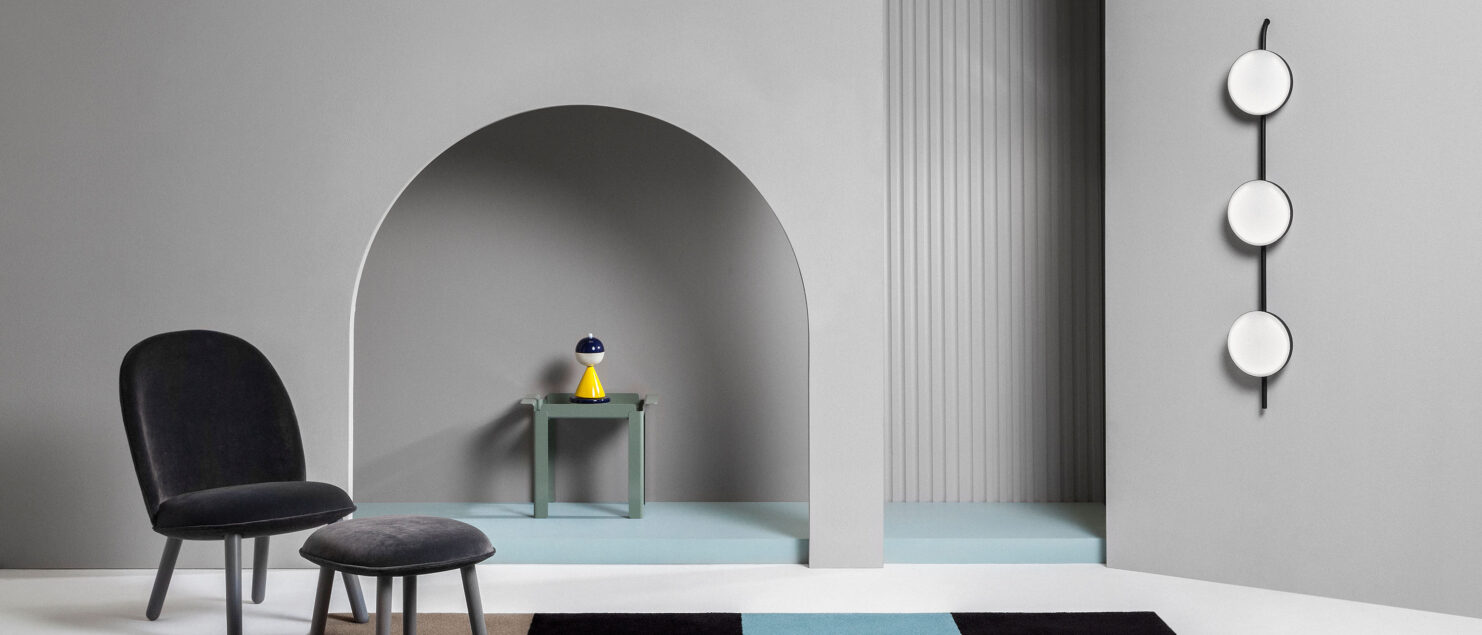Interview with Coty Larguía: language of forms
Between Coty Larguía ‘s early work as a set designer and her latest design projects, things happened. Art direction for advertising, participation in fashion campaigns and the creation of a decoration brand are on the list of achievements of this woman with her own stamp. Whether composing gastronomic and residential spaces or intervening in product development, his visual language is clear. Obliquethe rug collection created in collaboration with El Espartano, shows his interest in geometry and abstraction and marks a key moment in his professional career: the leap from audiovisual production to interior design, as his main field of creation.
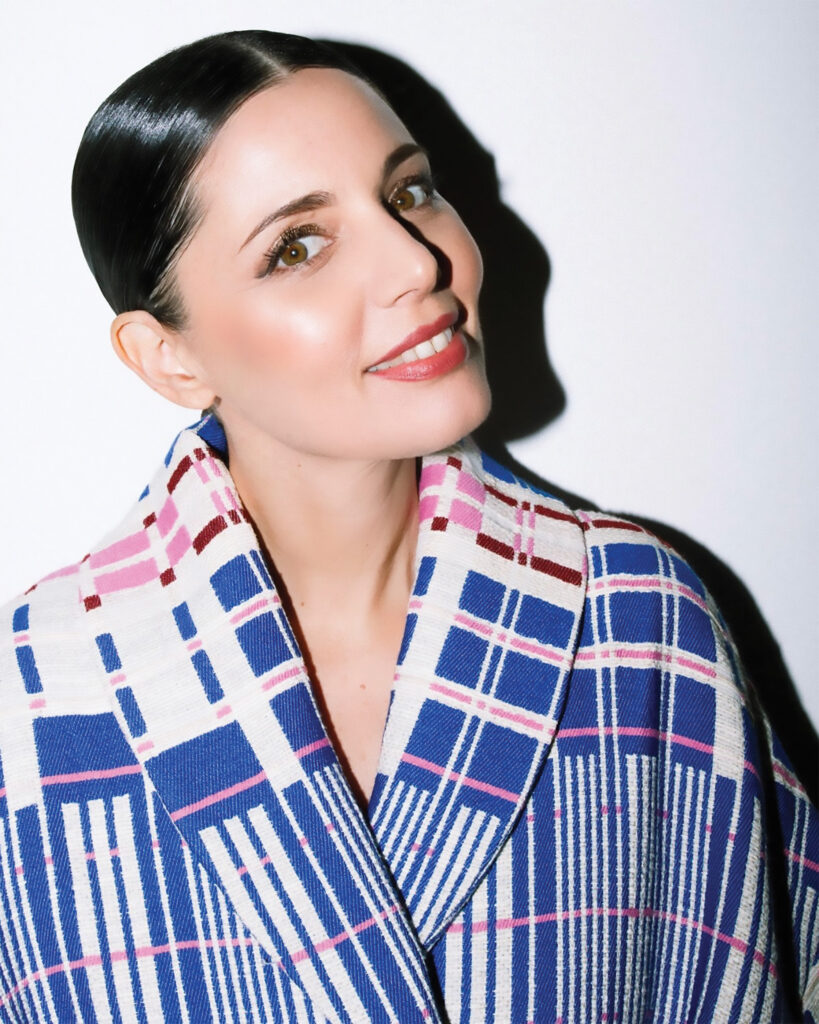

Handcrafted from natural fibers, the Oblique collection features four designs: Rouen, Azuka, Amberes and Oracular. Each of them is woven in different color variations.
Where does the inspiration for your work come from?
I get a lot from architecture, which is one of the things I am most passionate about, art and travel. Specifically for Oblique, we came from working with a line of wallpapers with a lot of geometry and we wanted the designs to coexist with that. We wanted to generate shapes with different thicknesses and color densities so that they would blend in with the living rooms. They are designed to place furniture on top of them and, depending on how they are placed, different parts of the design can be seen. I was interested in working with the mixture of geometric, art deco, contemporary and lines.
What is your design “bible” that you turn to when needed?
Ernst Gombrich’s History of Art is my bible, to which I return whenever I need inspiration. It is the most classic book in the history of art, with which I made my entire career. I also use social networks: Pinterest, Instagram. I have a profile where I only follow designers, studios and architects. That also inspires me and even without realizing it. So sometimes I need to think of more analog places that have to do with my beginnings. They transport me to a more genuine place. Then the day-to-day and the convenience of digital, which is tremendous, wins. In the studio, we thought about making mockups and moodboards, but lack of time always wins. And of course travel is inspiring. The vision one has when traveling, how images and ideas permeate, is very different from when one is looking for something precise. The residual of getting to know different cultures, architectures and cities always resonates.
If I had to name a very inspiring trip, I would say the one I took to Japan. It was a milestone for me. From then on, an aesthetic break occurred and I decided to dedicate myself to design. When I went in the early 2000s, it was not a time of networking. You traveled and were surprised because you could only see it through books or movies, but you didn’t have the proximity. For me it was very moving to discover that culture, the habits, the language, the design and even the technology.
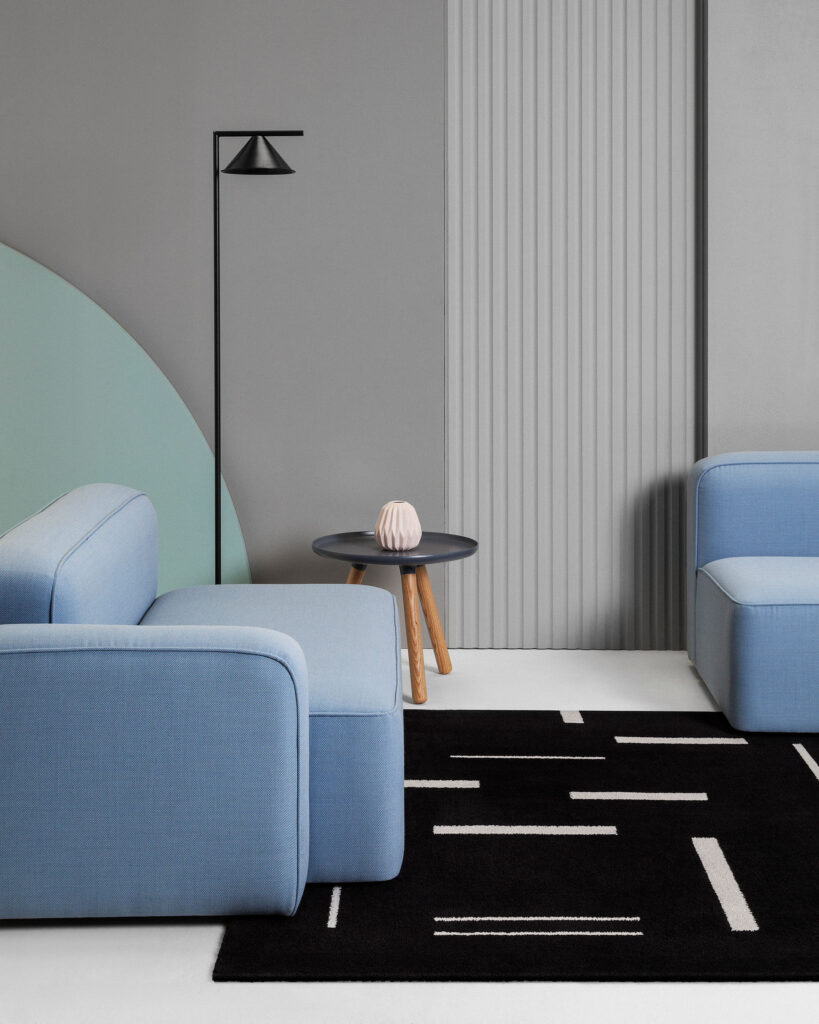
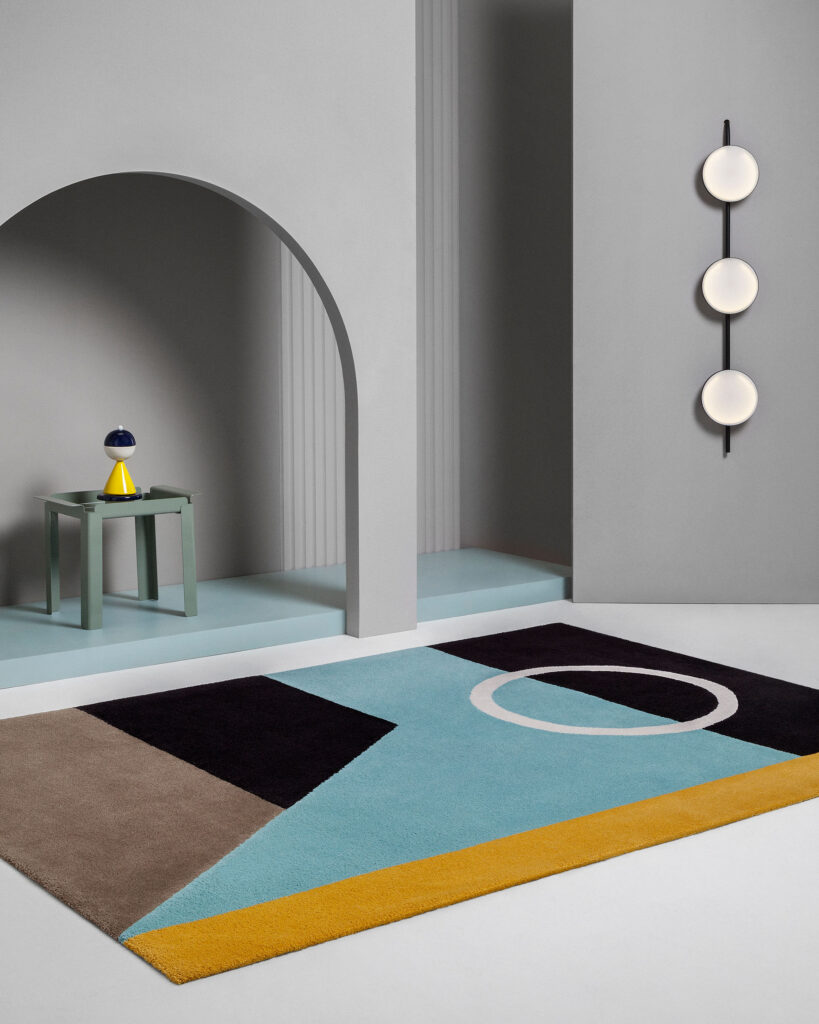
Inspired by Brutalist and Art Deco architecture, Coty Larguía’s designs fuse dynamic geometries by layering, generating a three-dimensional effect.
What place do textiles, particularly rugs, have in your projects?
They occupy a big place, especially in residential. Many spaces are built from the carpet, it is like the canvas that receives everything else. From there, you end up choosing the wall paint or the upholstery fabric. I feel comfortable with the colors of the Oblique collection: a bit desaturated, with some black, something neutral, something with grays and browns. The palette is something that marks my style, there are choices that I always come back to.
When you design, what is your main goal: comfort, design, practicality, sustainability?
It is never a single purpose. It is the combination, in its right measure, between the functional and the aesthetic. Somehow, I have to like it. And I also care that I feel represented. There is something about it that is inevitable, everything ends up having the same language. The work we designers do must be sustainable and represent what one brings to the local scene. It must have a little bit of everything.
How do you envision the future of design in terms of sustainability?
What excites me the most is when I see that technology is used for these purposes. Materials with the properties needed to work are achieved, but innovating and thinking from a sustainable point of view, from the point of view of recovery. Today we find more and more good materials that are recovered. That is where technology is our ally. Carpets reuse materials and polyesters, which were not well regarded before, are now redefined because they come from recycled materials. Fortunately, customers are attentive and it is also part of their brand vision, they want it to be seen. Sustainability runs through almost every project. Talking to a friend of mine who works in this field, I understood that there are many ways of conceiving sustainability, not only from the point of view of materials. For example, thinking about how to go back to the trades is one of the ways. The 100% sustainable world may never happen. But the fact that a paint company, for example, has 50% of toxic material, if it used to have 100%, that is something. It is an issue that is already on the table.
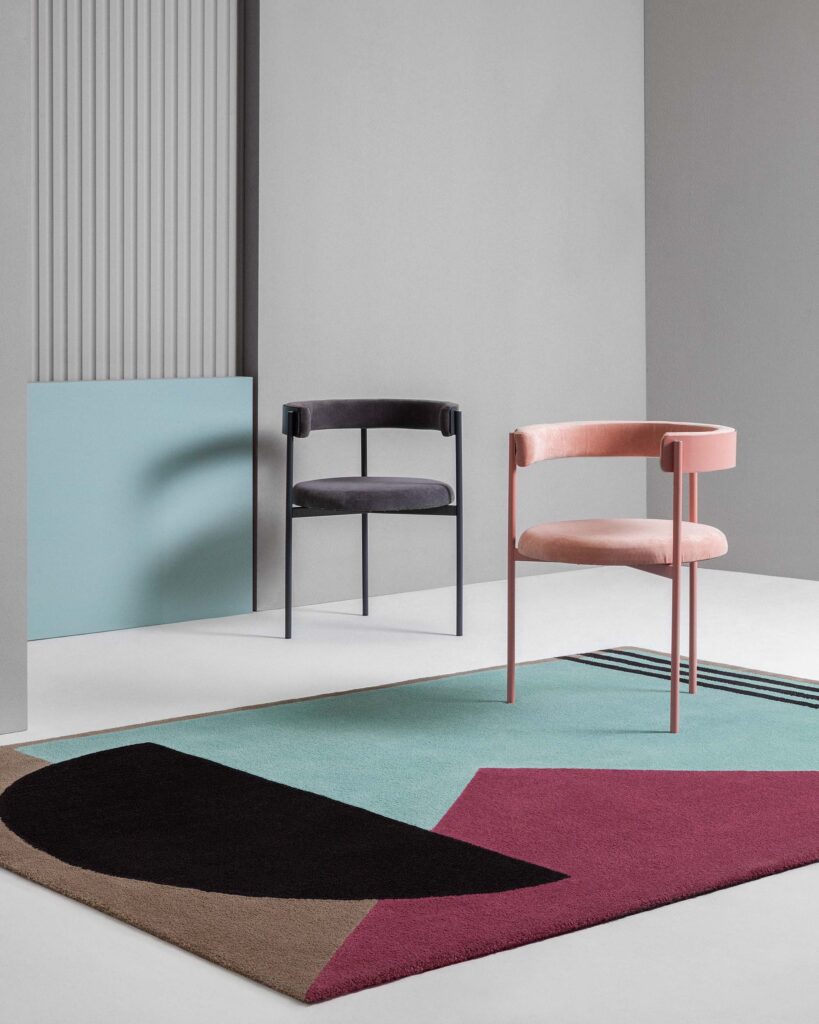
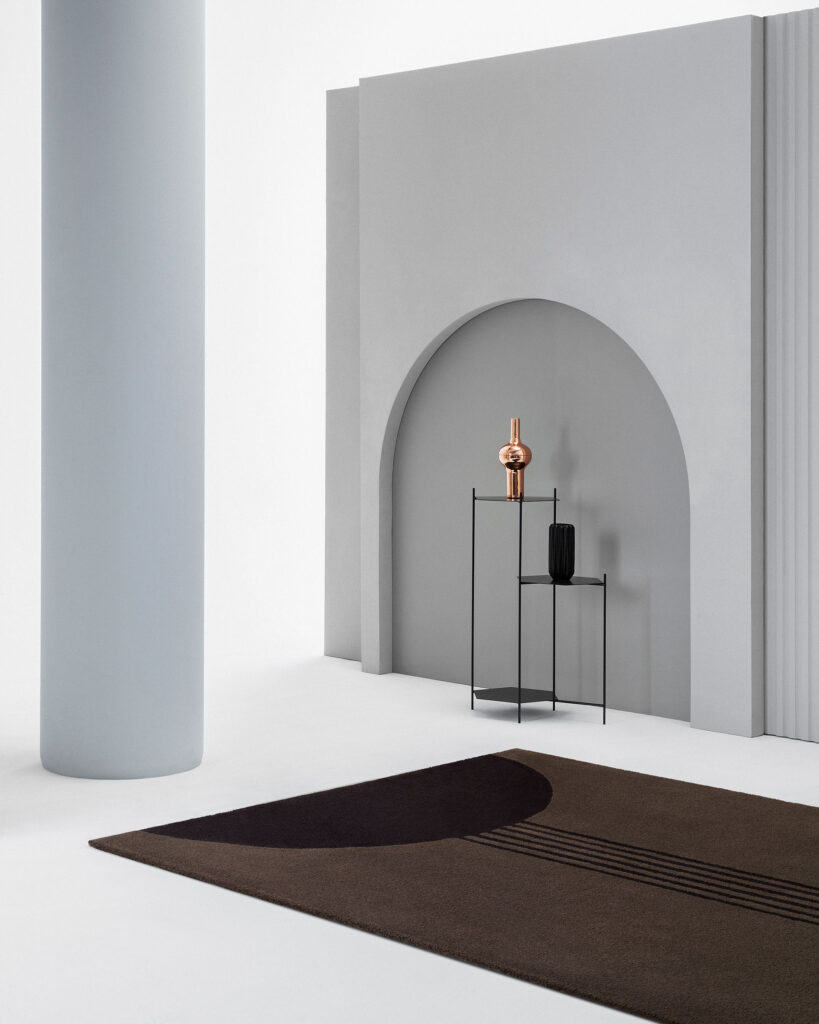
The Oblique collection was recognized in 2021 with the Seal of Good Design.
How do you think the pandemic changed the way we think about spaces?
I think there was a change in the perception and value of interior design. There was more time to observe it, to understand how important the environment is, how it affects the mood, in a better life. One can work from home and be just as efficient, work formats have changed. The happier people are, the better they work, no matter if they are in an office or not. The purpose of office design now is to make people want to come back. Before, the office was a place common to all, it had no personality. Today, owners want people to feel at ease, to be empathetic and stimulating places, to be more collaborative. There are hardly any fixed positions anymore.
Before ending the talk, we asked Coty for some advice for the new generation of designers. Her answer was simple: “you learn more from your mistakes than from your successes”. The key, for her, is to be encouraged, accept challenges and never stop learning.
Coty Larguía is an Art Director based in Buenos Aires. Graduated in Scenography and Visual Arts, she worked as a set designer in several theatrical productions in Buenos Aires, in art direction and advertising for several production companies. Creator of Picnic and Coty Larguía Studio, she explores design and develops interior design projects, product design, visual identity development and art direction.
